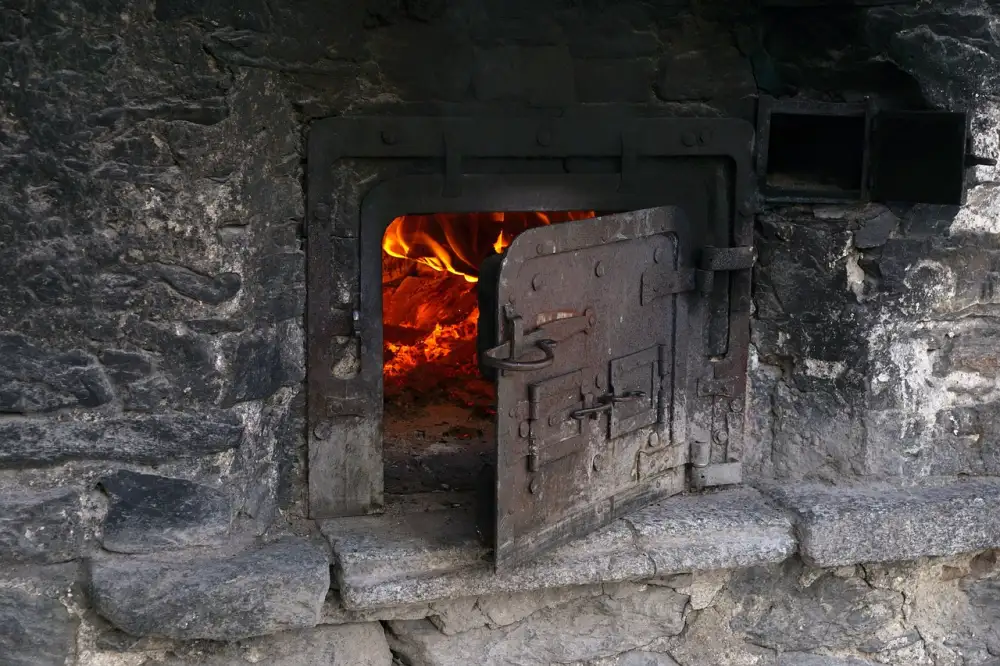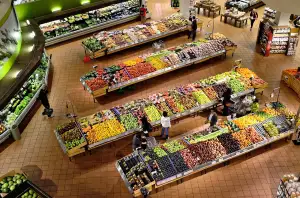Mastering Culinary Magic: Unleashing the Power of a Convection Oven in Your Home Kitchen

Convection ovens have revolutionized the way we cook by utilizing a fan to circulate hot air around the food. This constant circulation ensures even heat distribution, resulting in faster and more consistent cooking. Unlike conventional ovens that rely on radiant heat, convection ovens cook food more efficiently and effectively. Whether you're a seasoned chef or a novice cook, mastering the art of convection cooking can elevate your culinary skills to new heights. Let's delve deeper into the world of convection ovens and unlock their full potential in your home kitchen.
How Convection Ovens Work
Convection ovens work by using a fan to circulate hot air around the food being cooked. This constant airflow helps to distribute heat more evenly throughout the oven, resulting in faster and more consistent cooking. As the hot air moves around the food, it removes the cooler air that surrounds it, allowing for quicker heat transfer and reduced cooking times. The circulating air also helps to eliminate hot spots within the oven, ensuring that your dishes are cooked thoroughly and evenly. Overall, convection ovens provide a more efficient cooking method compared to conventional ovens.
Benefits of Using a Convection Oven
When it comes to cooking, a convection oven offers several benefits that can enhance your culinary experience. One of the main advantages is its ability to cook food faster and more evenly than conventional ovens. The fan inside a convection oven circulates hot air around the food, ensuring that heat is distributed evenly, resulting in quicker cooking times. This also helps to eliminate hot spots and reduce the risk of undercooked or overcooked dishes. Additionally, convection ovens are known for producing crispier and browner exteriors on food items like roasted vegetables, meats, and baked goods due to the circulating air drying out the surface moisture quickly. This feature makes convection ovens ideal for achieving perfectly crispy textures on a wide range of dishes.
Tips for Cooking with a Convection Oven
1. Adjust Temperatures: Lower the temperature by about 25 degrees Fahrenheit compared to traditional recipes when using a convection oven to prevent overcooking or burning.
2. Use Shallow Pans: Opt for shallow pans to allow hot air to circulate evenly around the food, ensuring even cooking and browning.
3. Avoid Overcrowding: Leave enough space between dishes on the racks to allow air to flow freely, promoting consistent cooking throughout.
4. Monitor Closely: Keep an eye on your food as it cooks since convection ovens can cook faster than conventional ovens due to the circulating hot air.
5. Rotate Dishes: To ensure even cooking, rotate dishes halfway through the cooking process, especially when preparing multiple items simultaneously.
6. Use Low-Sided Baking Sheets: Choose low-sided baking sheets instead of high-sided ones to allow hot air to circulate effectively around the food for optimal results.
By following these tips, you can make the most of your convection oven and enjoy perfectly cooked meals every time.
Cleaning and Maintenance of Convection Ovens
Cleaning and maintaining your convection oven is essential to ensure its optimal performance. To clean the interior, remove the racks and any loose debris. Wipe down the interior with a damp cloth and mild detergent, avoiding harsh chemicals that can damage the oven's surfaces. For stubborn stains, create a paste of baking soda and water, apply it to the stains, and let it sit before scrubbing gently. Remember to clean the racks separately with warm soapy water. Regularly check the door seal for any signs of wear or damage, as a tight seal is crucial for efficient operation. Lastly, refer to the manufacturer's instructions for specific maintenance guidelines to prolong the lifespan of your convection oven.
Comparison between Convection Ovens and Conventional Ovens
When comparing convection ovens to conventional ovens, the key difference lies in how they distribute heat. Conventional ovens rely on radiant heat that surrounds the food, resulting in uneven cooking and hot spots. In contrast, convection ovens use a fan to circulate hot air evenly around the food, cooking it more quickly and uniformly. This leads to faster cooking times and often better browning and crisping of foods. Additionally, convection ovens can typically cook at lower temperatures than conventional ovens, saving energy in the long run. Overall, the even heat distribution of convection ovens makes them a popular choice for home cooks looking to achieve consistent and professional results in their dishes.
Popular Recipes to Try in a Convection Oven
1. Roast Chicken: The convection oven's even heat distribution ensures a crispy skin and juicy meat.
2. Baked Goods: Cookies, cakes, and pastries rise evenly with a convection oven's consistent temperature.
3. Roasted Vegetables: Enjoy perfectly caramelized veggies with less oil using the convection setting.
4. Pizza: Achieve a crispy crust and evenly melted cheese by baking pizza in a convection oven.
5. Whole Fish: Cook fish evenly and quickly by using the convection setting for a moist and flavorful result.
These recipes showcase the versatility and efficiency of cooking with a convection oven, making it an essential tool for any home chef looking to elevate their culinary skills.
In conclusion, incorporating a convection oven into your home kitchen can truly elevate your cooking experience. The even heat distribution and faster cooking times make it a valuable tool for any home chef looking to create delicious meals with ease. By understanding how convection ovens work and following some simple tips, you can unlock the full potential of this appliance. Whether you're baking, roasting, or broiling, a convection oven can help you achieve professional-level results in the comfort of your own home. So why not embark on a flavorful journey with food and unleash the culinary magic of a convection oven today?
Published: 14. 04. 2024
Category: Home



